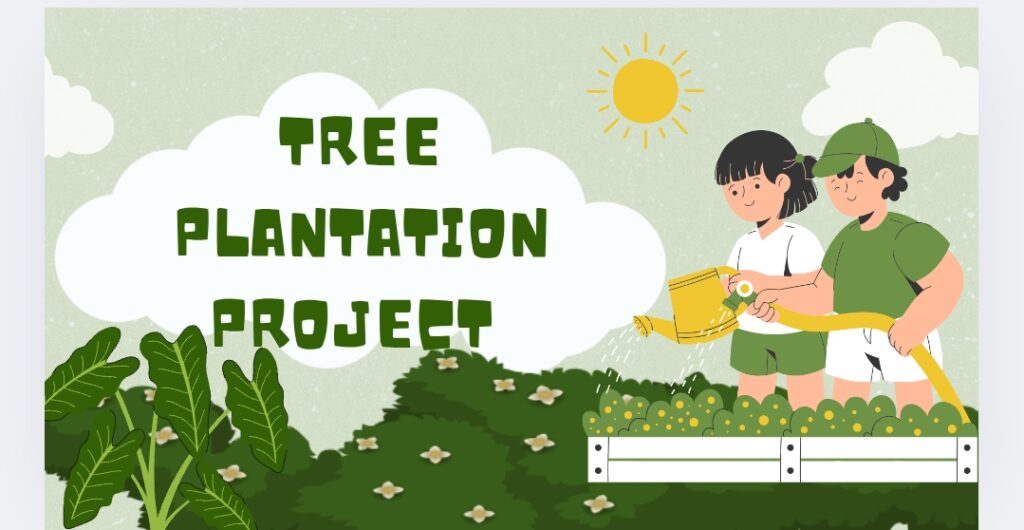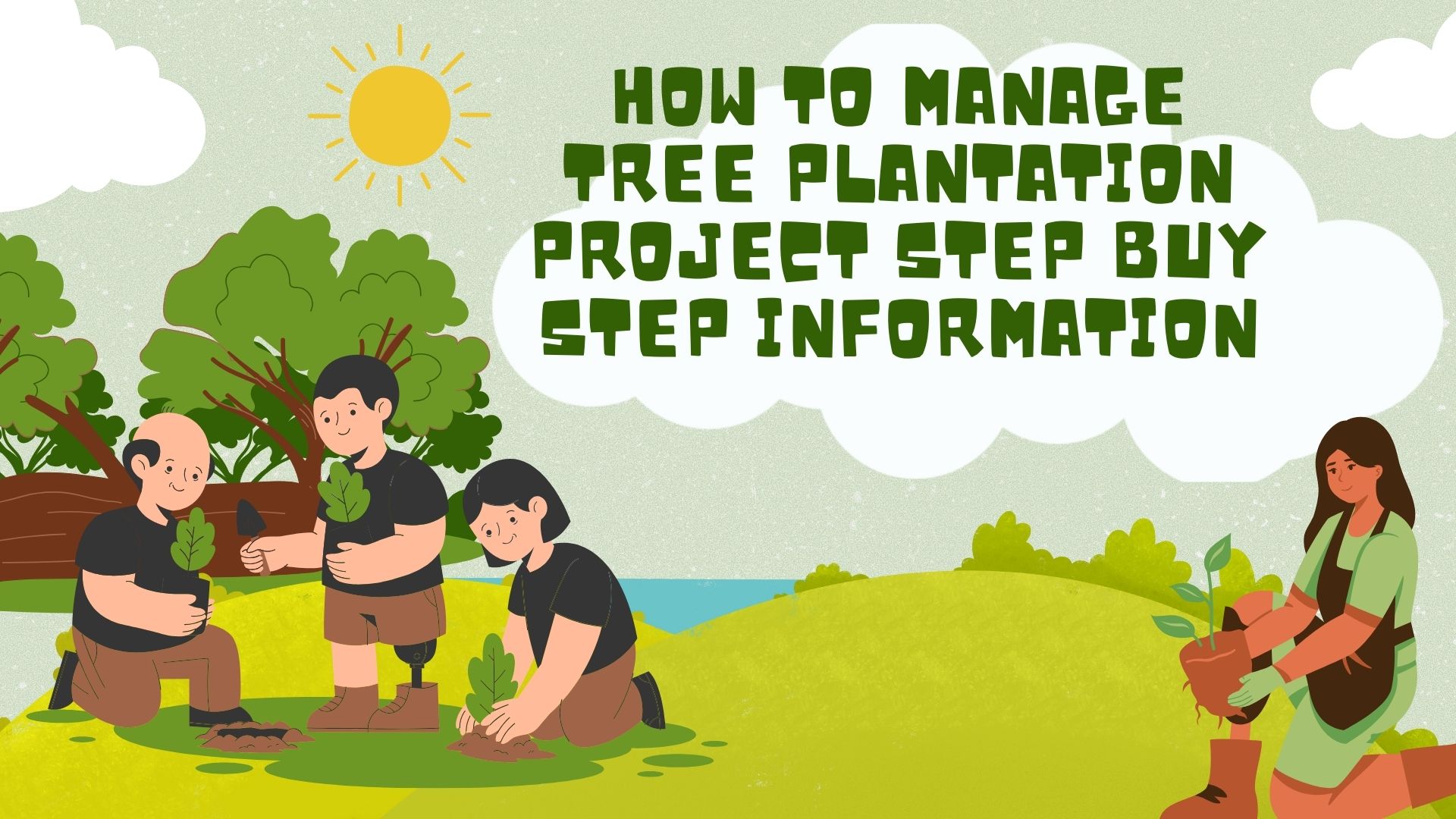Tree plantation projects are critical for combating climate change, restoring ecosystems, and fostering community engagement. However, managing such projects requires meticulous planning, execution, and monitoring. This 3,000-word guide breaks down the process into actionable steps, complete with tables for easy reference.

Table of Contents
- Introduction
- Step 1: Define Objectives and Scope
- Step 2: Conduct a Feasibility Study
- Step 3: Secure Funding and Resources
- Step 4: Select the Right Tree Species
- Step 5: Site Preparation
- Step 6: Planting Process
- Step 7: Post-Planting Care and Maintenance
- Step 8: Monitoring and Evaluation
- Step 9: Community Engagement and Education
- Step 10: Documentation and Reporting
- Conclusion
1. Introduction
Tree plantation projects contribute to carbon sequestration, biodiversity conservation, and soil health. However, poor management can lead to low survival rates, wasted resources, and ecological imbalance. This guide provides a systematic approach to ensure your project’s success.

2. Step 1: Define Objectives and Scope
Begin by outlining clear goals. Ask:
- Why are you planting trees? (e.g., reforestation, urban greening, agroforestry)
- Where will the plantation occur? (geographical boundaries)
- What are the deliverables? (number of trees, area covered)
- Who are the stakeholders? (NGOs, government, local communities)
Table 1: Project Objectives Template
| Objective Type | Description | Metrics |
|---|---|---|
| Environmental | Restore 50 hectares of degraded land | 10,000 native trees planted |
| Social | Engage 200 community volunteers | Training sessions conducted |
| Economic | Generate income via fruit-bearing trees | 20% increase in local income |
3. Step 2: Conduct a Feasibility Study
Evaluate the site’s suitability:
- Soil Testing: pH levels, nutrient content, drainage.
- Climate Analysis: Rainfall patterns, temperature ranges.
- Ecological Assessment: Existing flora/fauna, invasive species risks.
- Legal Compliance: Land ownership, permits, environmental regulations.
Table 2: Feasibility Checklist
| Factor | Criteria | Status (Yes/No) |
|---|---|---|
| Soil | pH 5–7, well-drained | Yes |
| Climate | Adequate rainfall (800–1200 mm/year) | No |
| Legal | Land ownership verified | Yes |
4. Step 3: Secure Funding and Resources
Identify financial and material needs:
- Budgeting: Include costs for saplings, tools, labor, and monitoring.
- Funding Sources: Grants, corporate sponsorships, crowdfunding.
- Partnerships: Collaborate with NGOs or government agencies.
Table 3: Sample Budget Breakdown
| Item | Quantity | Cost per Unit | Total Cost |
|---|---|---|---|
| Saplings | 10,000 | $0.50 | $5,000 |
| Labor | 20 workers | $10/day | $2,000 |
| Tools | 50 units | $5 | $250 |
5. Step 4: Select the Right Tree Species
Choose species based on:
- Ecological Suitability: Native vs. exotic.
- Purpose: Timber, fruit, shade, or biodiversity.
- Growth Rate: Fast-growing for quick impact, slow-growing for longevity.
Table 4: Species Selection Criteria
| Species | Native? | Purpose | Growth Rate | Drought Tolerance |
|---|---|---|---|---|
| Oak | Yes | Timber | Slow | Moderate |
| Neem | Yes | Medicinal | Fast | High |
6. Step 5: Site Preparation
Prepare the land for planting:
- Clearing: Remove weeds and debris.
- Soil Treatment: Add compost or fertilizers if needed.
- Layout Design: Spacing (e.g., 3m x 3m), contour trenches for slopes.
Table 5: Site Preparation Timeline
| Activity | Duration | Responsible Party |
|---|---|---|
| Land Clearing | 7 days | Local laborers |
| Soil Testing | 2 days | Agronomist |
7. Step 6: Planting Process
Follow best practices:
- Timing: Plant during rainy seasons for better survival.
- Techniques: Pit digging (size: 30cm x 30cm), mulching, watering.
- Quality Control: Inspect saplings for diseases.
Table 6: Planting Schedule
| Date | Activity | Saplings Planted | Location |
|---|---|---|---|
| 15 June | Pit digging | 500 | Zone A |
| 20 June | Planting | 500 | Zone A |
8. Step 7: Post-Planting Care and Maintenance
Ensure sapling survival:
- Watering: Regular intervals (weekly/biweekly).
- Weeding: Prevent competition for nutrients.
- Pest Control: Use organic pesticides.
Table 7: Maintenance Calendar
| Month | Activity | Frequency |
|---|---|---|
| July | Watering | Twice/week |
| August | Weeding | Once/month |
9. Step 8: Monitoring and Evaluation
Track progress using KPIs:
- Survival Rate: % of saplings alive after 6 months.
- Growth Metrics: Height, canopy spread.
- Ecological Impact: Bird/insect diversity.
Table 8: Monitoring Indicators
| Indicator | Target | Actual (6 Months) |
|---|---|---|
| Survival Rate | 85% | 78% |
| Avg. Height | 1.5m | 1.2m |
10. Step 9: Community Engagement and Education
Involve locals for sustainability:
- Workshops: Teach planting techniques.
- Awareness Campaigns: Highlight environmental benefits.
- Volunteer Programs: Foster ownership.
Table 9: Community Engagement Plan
| Activity | Participants | Date | Outcome |
|---|---|---|---|
| Workshop | 50 farmers | 10 July | 80% adoption of techniques |
11. Step 10: Documentation and Reporting
Maintain records for accountability:
- Photos/Videos: Capture before-and-after scenes.
- Reports: Share progress with stakeholders.
- Lessons Learned: Improve future projects.
Table 10: Reporting Template
| Section | Content |
|---|---|
| Executive Summary | Goals achieved, challenges faced |
| Financial Report | Budget vs. actual expenditure |
12. Conclusion
A well-managed tree plantation project requires strategic planning, adaptive management, and community involvement. By following these steps and leveraging the tables provided, you can maximize ecological benefits and ensure long-term success.
